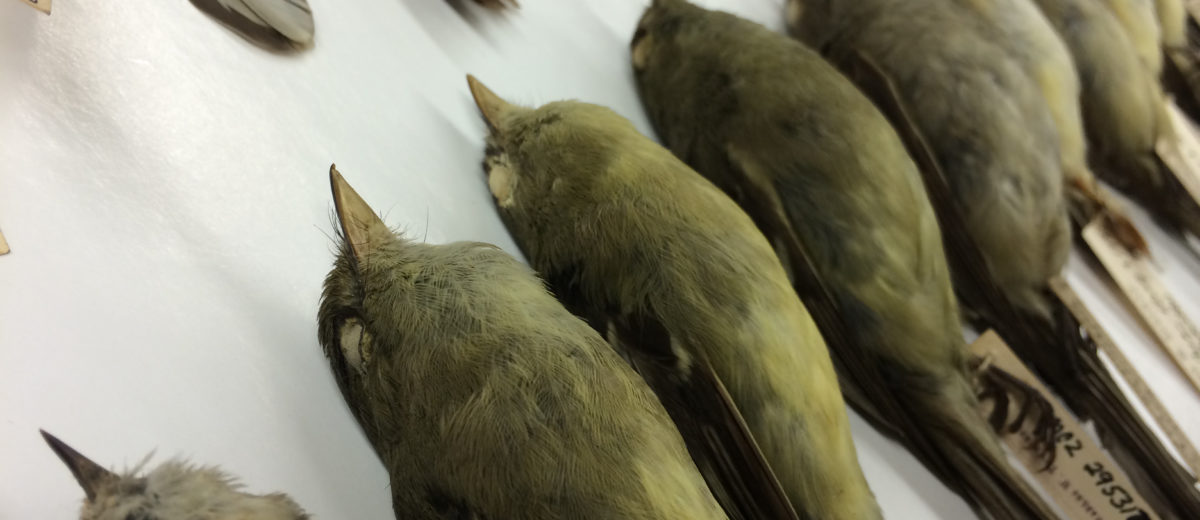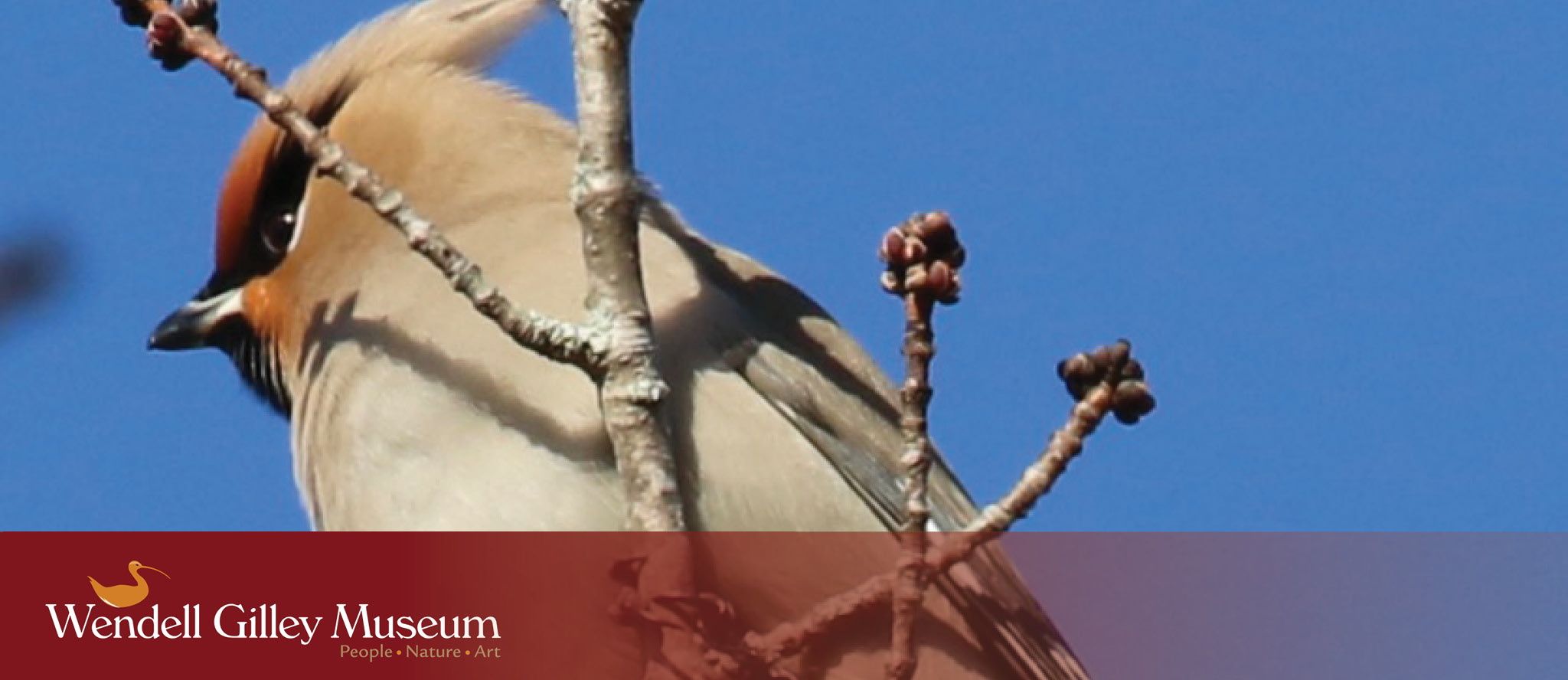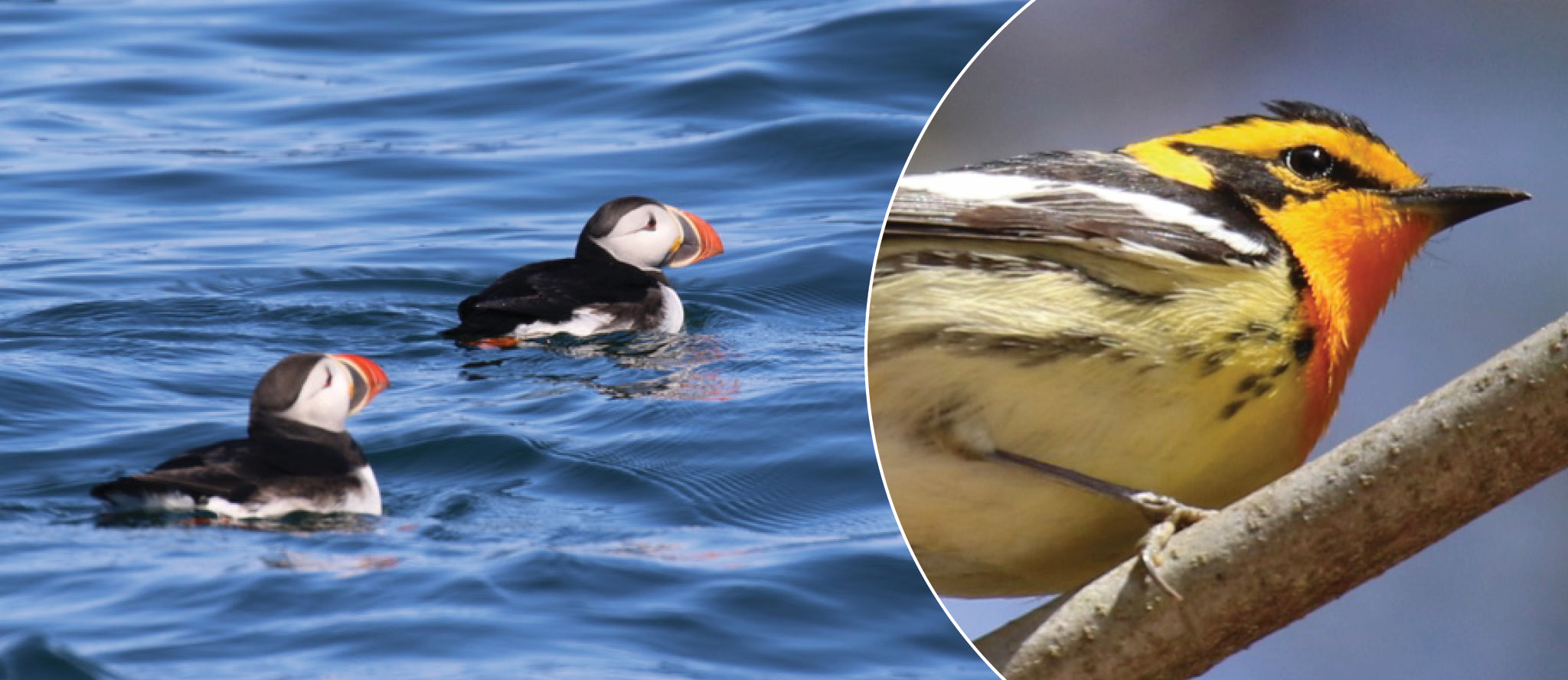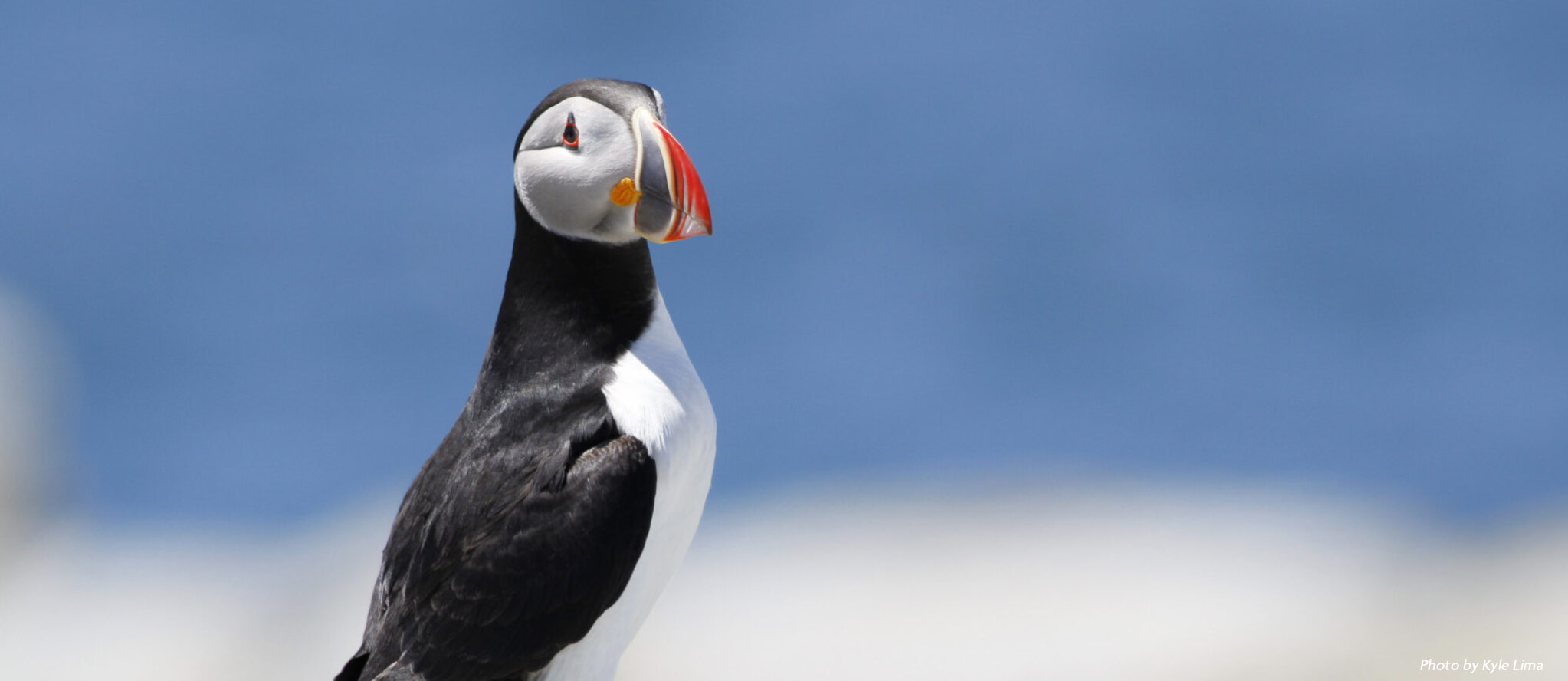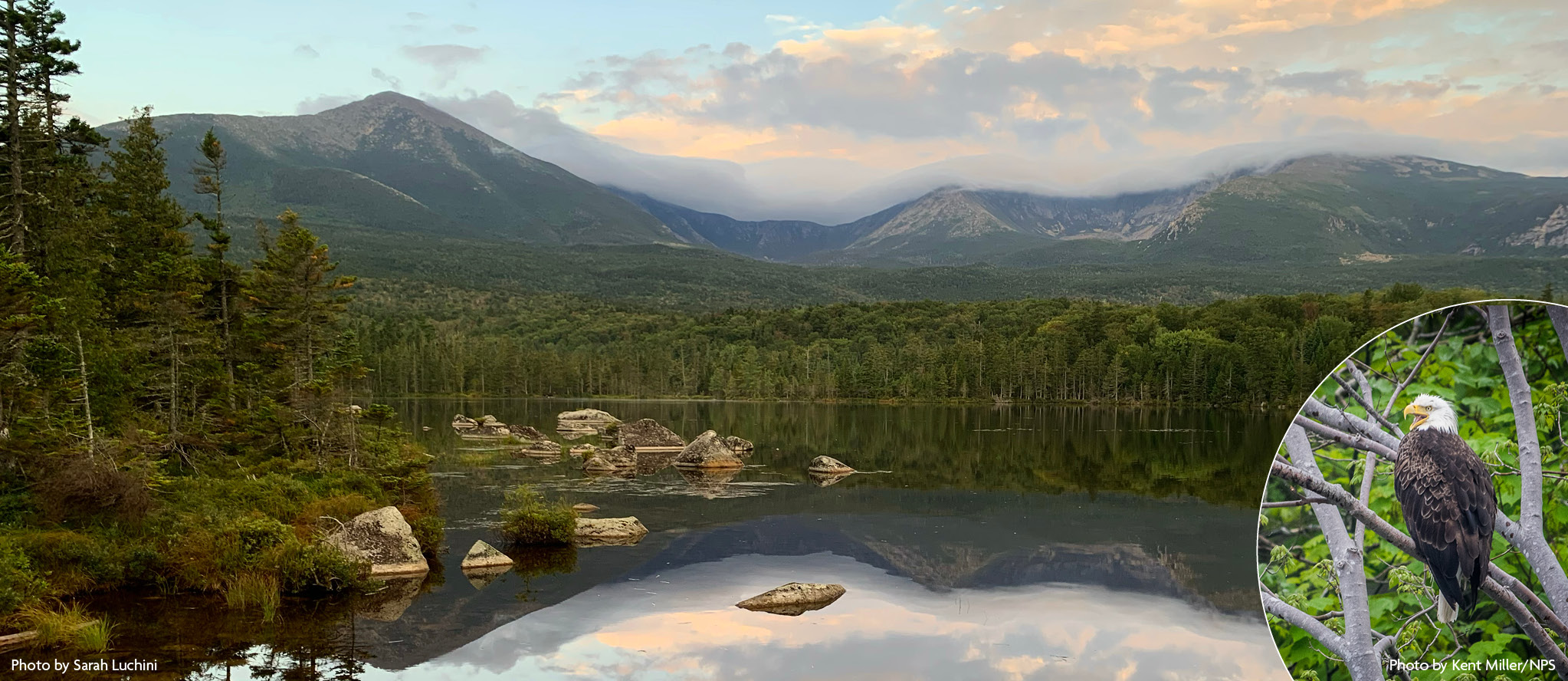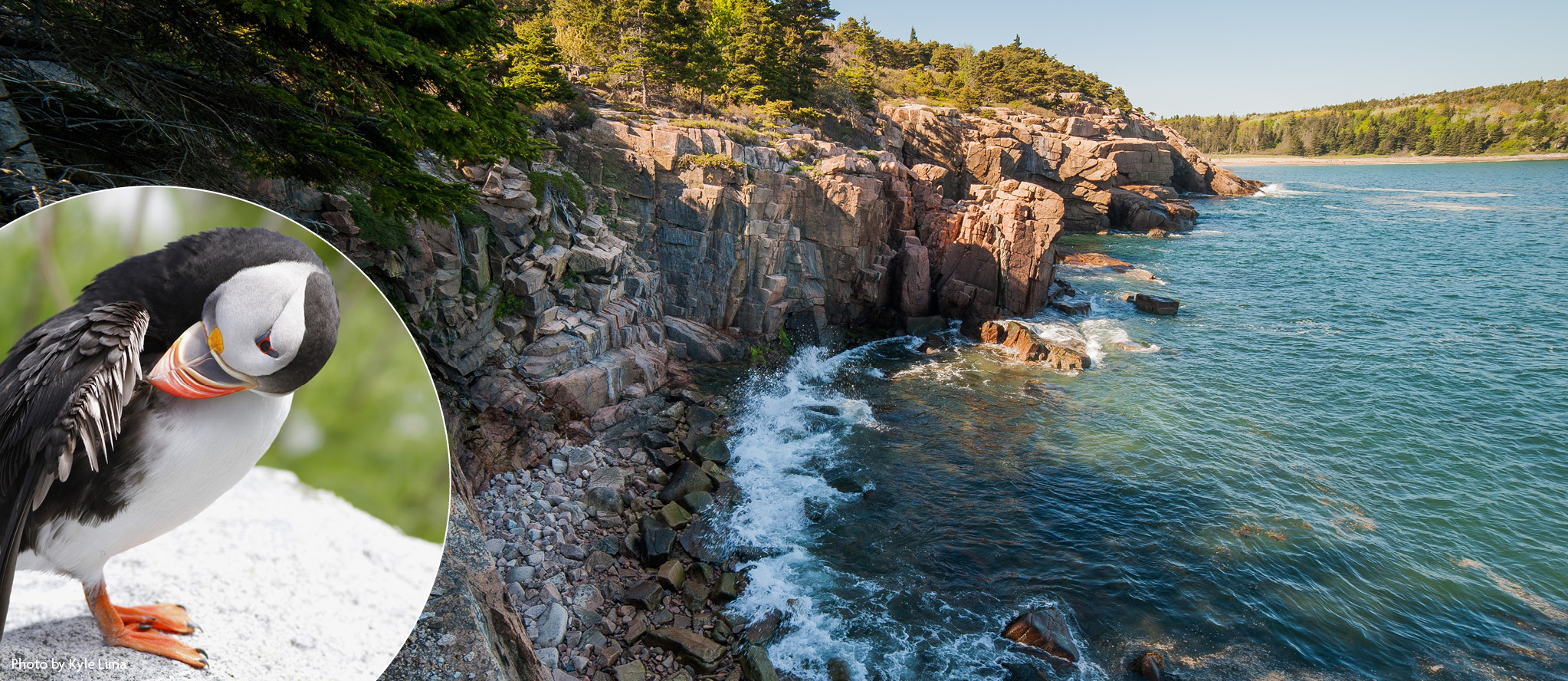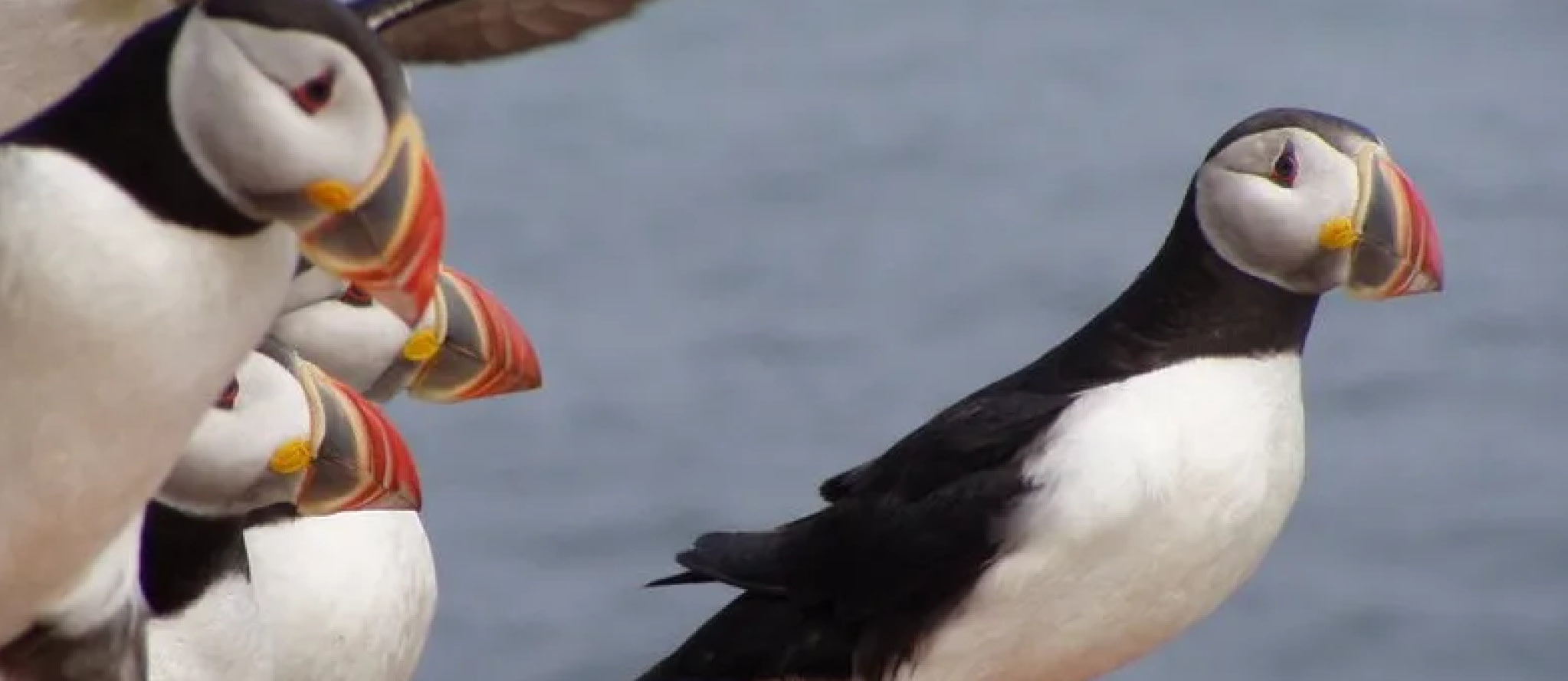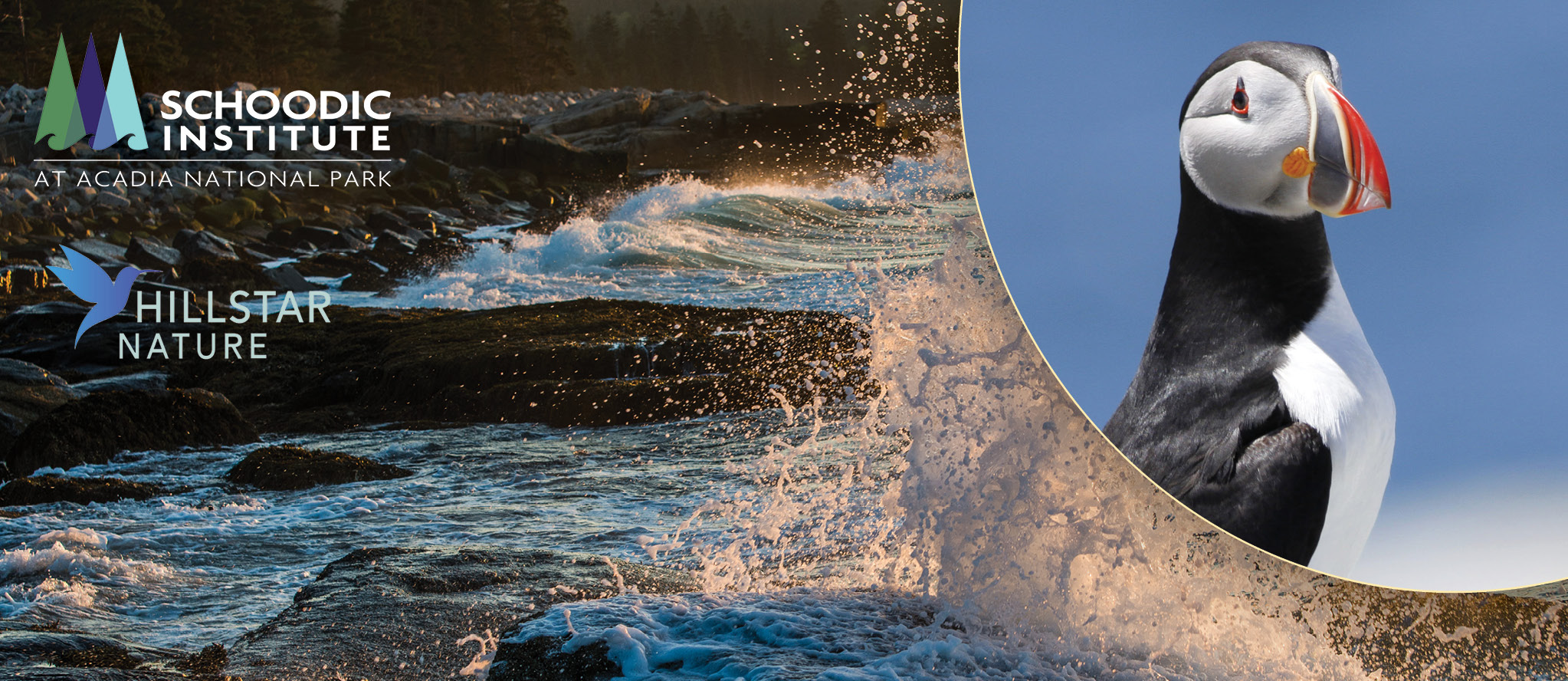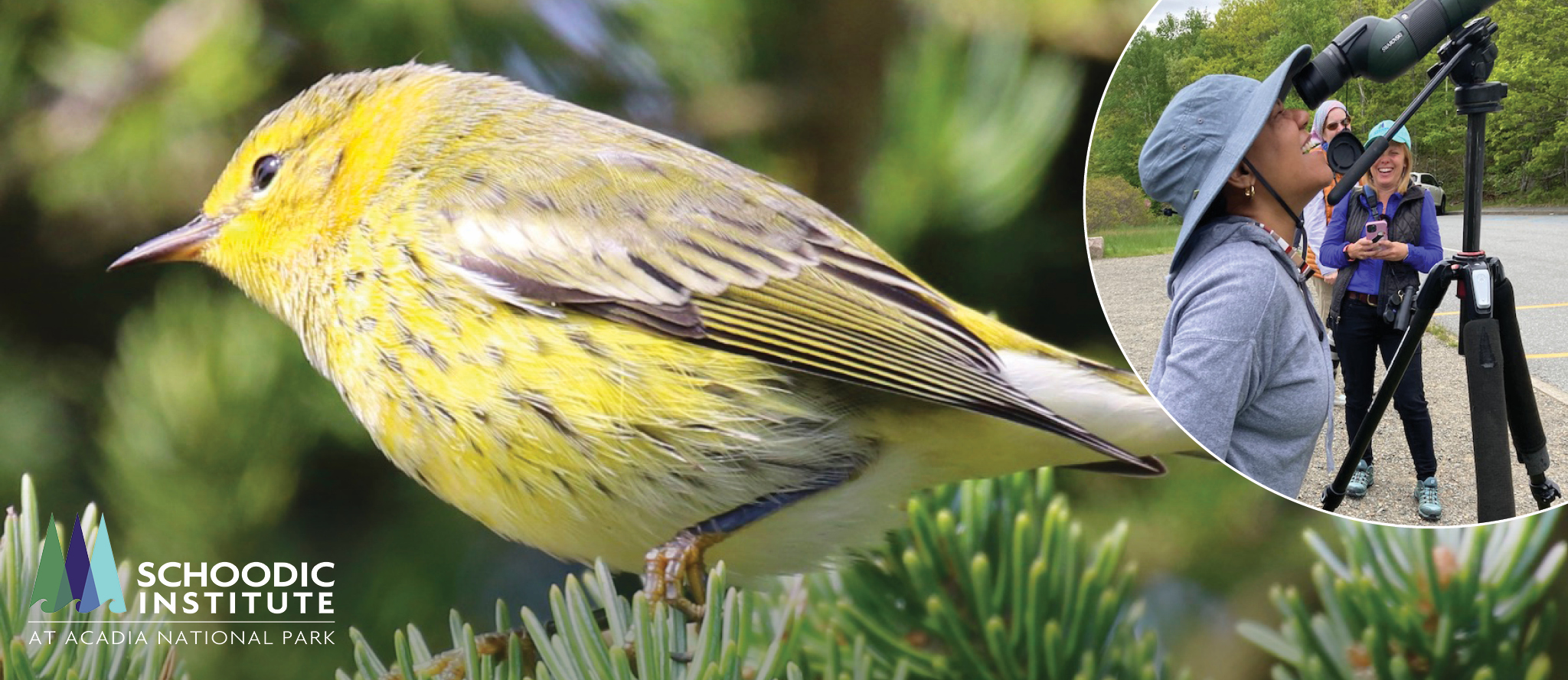Early History of Bird Ecology in Acadia
by Catherine Schmitt, Science Communication Specialist
The lives of humans and birds have always been intertwined. Beyond being a source of food, birds figure prominently in Wabanaki culture and attracted the attention of European and American naturalists beginning in the middle of the nineteenth century.
Early “bird ecology” consisted of documenting the presence, absence, and abundance of bird species in a given location.
The earliest bird specimens from Acadia are a pair of flycatchers from 1869, collected by Roland Thaxter on Mount Desert Island. Other early collectors included Charles Foster Batchelder, William Brewster, Henry Munson Spelman, and Charles Wendell Townsend. Spelman and Townsend were members of the Champlain Society, a group of Harvard students who conducted the first comprehensive natural history surveys on Mount Desert Island in the 1880s.
By the twentieth century, photography and extensive museum collections made it unncessary for people to kill birds in order to study them. There was also increasing concern for the welfare of birds, culminating in 1896, when Harriet Lawrence Hemenway of Boston organized her friends (including Maine writers Sarah Orne Jewett and Celia Thaxter, mother of early bird collector Roland Thaxter) into what became the Audubon Society.
The Champlain Society’s bird list was used by Francis Henry Allen in “A Preliminary List of the Summer Birds of Mount Desert Island, Maine” circa 1900, issued by the Joint Path Committee of the Village Improvement Societies of Bar Harbor, Northeast Harbor, and Seal Harbor. Other birders refined the list over time, as study expanded to focus on migration, breeding, habitat, and interaction with other species.
Through visual observation, photography, and bird banding, Eleonora Morgan, Margaret Bodine, Helen C. Gilbert, Mrs. Franklin Anthony, Marion Pellew, Cordelia Stanwood, Carroll Tyson, James Bond, Acadia National Park naturalist Arthur Stupka, and Barbara Patterson contributed to knowledge of Acadia’s birds through the middle of the twentieth century.
These lists and associated notes suggest that seabirds like Black Guillemot and Common Tern are more common today, while migratory songbirds like Yellow-bellied Flycatcher and Chestnut-sided, Magnolia, and Bay-breasted Warblers are less common. Data from current monitoring programs coordinated by Schoodic Institute, such as Cadillac Mountain Hawkwatch and the annual Christmas Bird Count, are helping us better analyze changes in bird populations over time.
Bird Chatter Discussions and Observations at the Wendell Gilley Museum
Wendell Gilley Museum 4 Herrick Road, Southwest Harbor, MaineFlock to the Wendell Gilley Museum for a fun and informative few hours with Seth Benz, Schoodic Institute’s bird ecology […]
2024 Finding Acadia’s Early Birds: A Special Maine Birding Excursion
Schoodic Institute 9 Atterbury Circle, Winter Harbor, ME, United StatesSchoodic Institute’s bird ecology director Seth Benz will lead this special tour designed to enhance your enjoyment of all birds, especially […]
2024 Spring Birds of Acadia with Puffin Cruise (FULL)
Schoodic Institute 9 Atterbury Circle, Winter Harbor, ME, United StatesThank you for your interest. We are currently at capacity for this event, but good news - we have more […]
2024 Katahdin Splendor: Birds and Wildlife in the Shadow of Maine’s Highest Peak
Registration is open! Please scroll down to register. The combined scenic expanse of Baxter State Park and Katahdin Woods and […]
2024 Coastal Splendor: Puffins, Warblers, Lobster and Lodging by the Edge of the Sea (FULL)
Schoodic Institute 9 Atterbury Circle, Winter Harbor, ME, United StatesThank you for your interest. We are currently at capacity for this event, but good news – we have more […]
Downeast Maine Puffins and Seabirds with Caretta Inspired Journeys
Join Caretta Inspired Journeys for a taste of summer in Downeast Maine and experience the unique coastal islands of the […]
Acadia’s Iconic Birds, Whales, and Scenic Views
Rockefeller Hall, Schoodic Institute at Acadia National park 9 Atterbury Circle, Winter Harbor, ME, United StatesJoin Schoodic Institute and Hillstar Nature Tours, with guides Holly Merker and Seth Benz, on July 13 - July 17, […]
2024 Maine’s Bold Coast: Schoodic to Head Harbor Passage
Schoodic Institute 9 Atterbury Circle, Winter Harbor, ME, United StatesMaine's Downeast region is ideal for exploring the quieter reaches of Acadia National Park, spruce-bordered rocky headlands, nearby blueberry barrens, […]
